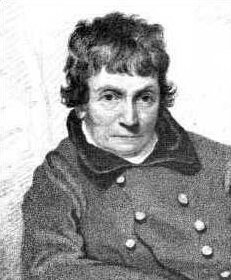Hampden Clubs facts for kids
The Hampden Clubs were groups formed in England in the early 1800s. They were part of a movement called the Radical Movement. These clubs were places where people could discuss politics and campaign for changes. They were especially popular in central and northern England. People wanted social and political reforms after the end of the Napoleonic Wars. The government eventually forced these clubs to close down.
How the Hampden Clubs Started
The first Hampden Club began in London in 1812. John Cartwright is often seen as the main founder. He was a former military officer who had been involved in politics for a long time. He traveled around northwest England to share his idea. He wanted to create places where ordinary people could talk about politics.
Before this, there hadn't been similar groups since the London Corresponding Society closed in 1794. The Hampden Clubs aimed to bring together middle-class people and working-class Radicals. They all wanted to reform the government. The clubs were named after John Hampden, an important leader during the English Civil War.
In 1813, Cartwright was arrested while promoting the clubs. He went on another tour in 1815. The first Hampden Club outside London started in 1816 in Royton. Soon, more clubs formed in the North-West. For example, in Middleton, a poet named Samuel Bamford started one. Other clubs appeared in places like Oldham, Manchester, and Stockport.
What Members Did
Members of the Hampden Clubs paid a small fee, usually a penny each week. They often met weekly to discuss politics and current events. They read Radical pamphlets and newspaper articles by famous reformers like William Cobbett.
Samuel Bamford described the clubs positively. He said they offered a peaceful way to make changes. Members learned and discussed ideas instead of causing riots or destroying property.
The clubs helped many working people. Some learned to read, write, and speak at these meetings. Others even developed a talent for writing poetry. This made the gatherings more enjoyable. People from all over came to listen and then became strong supporters of the clubs.
In January 1817, many Hampden Clubs and similar groups sent delegates to a meeting in London. About 70 people met at the Crown & Anchor tavern. This place was well known for political gatherings. The meeting was called by Cartwright and Jones Burdett. They wanted to discuss how to achieve government reform.
The Hampden Clubs' leaders suggested ideas like votes for all householders. They also wanted fairer election areas and yearly elections. However, some members wanted even bigger changes. The final decisions from the meeting did not mention the Hampden Clubs directly. Newspapers like The Times criticized the meeting. They said the delegates were trying to overthrow the government.
Why the Clubs Closed Down
The government watched the Hampden Clubs with suspicion. They thought the clubs were encouraging too much radicalism. On February 9, 1817, a secret government report said the clubs' real goal was to cause a large uprising. The government then passed new laws, like the Seditious Meetings Act 1817. These laws made it harder for political clubs to meet.
For example, the Birmingham Hampden Club started in September 1816. By January, it had 300 regular attendees. This club was moderate and spoke out against violence. But it struggled to find places to meet. Pub owners were pressured by authorities not to let the clubs use their rooms. Even when private rooms were found, the meetings stopped by April 1817. This was due to the suspicious atmosphere and the actions of a government spy.
In Manchester, the police targeted the movement's leaders. Many, including Samuel Bamford, were arrested in March 1817. They were sent to London and spent months in prison without being charged. With the Hampden Clubs suppressed, the leaders in Lancashire formed a new group. This group called the public meeting in 1819 that became known as the Peterloo Massacre.


